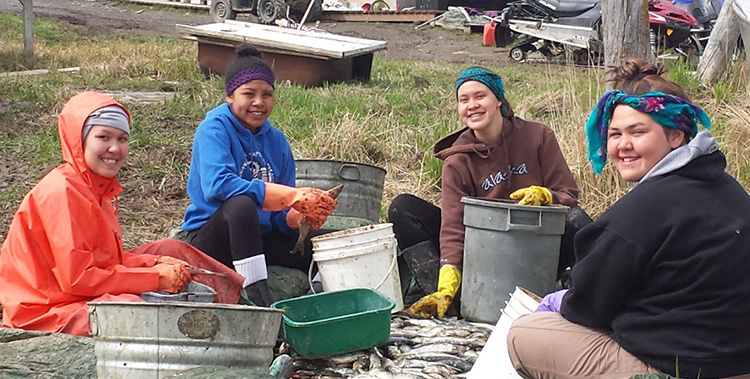Yup’ik Teaching Moment:
Iqalluarpak [Ee-kaw-LHUA-gh-buck] is Yup’ik for “Herring”
Storyknife, May/June 2023 edition


Calista Education & Culture, Inc. (CECI) presents the Yup’ik Teaching Moment in our Storyknife newsletter. CECI highlights Yuuyaraq, the traditional/cultural way of being in our Region. This Yup’ik Teaching Moment is provided by Mark John, CECI Cultural Advisor of Nightmute and Toksook Bay.
Starting in April and on through June, herring hit the southwest and west coast of Alaska in massive numbers.
Herring brings with them seals, whales and birds that feed on them, providing an opportunity for some to hunt those animals. More so, herring is fished as a food source for many villages in western Alaska. This is especially true for the Qaluyaat (Nelson Island) area since herring is one of the main dried food sources.
Herring spawn on kelp. Herring and its roe are harvested every spring. Herring eggs on kelp is called Elquaq in Yup’ik, and it is a delicacy eaten raw or cooked. When freezers were not available, roe on kelp was dried for winter use.
Iqalluarpak [Ee-kaw-LHUA-gh-buck] is Yup’ik for “Herring.”
Herring is dried whole or split in half. It is braided and hung. Most herring are eaten just dried, but some is also smoked. Dried herring can also be stored in seal oil. Herring is also taken half dried and boiled. Boiled, half-dried herring is called Egamaarrluk. Herring that is too fat and does not dry, is partially dried and is called Nin’amayuk. It is stored in seal oil before eaten. When eaten on very cold days, it keeps people warm. It has a very strong flavor and is considered a delicacy.
Herring roe, when taken from the belly, is spread on logs or plywood to dry and soaked and eaten in the winter. Dried herring roe is called Imlaucuaq.
Arrival of herring is always an exciting time for everyone.
The mission of Calista Education & Culture, Inc. (CECI) is to celebrate and promote Yuuyaraq, the traditional/cultural way of being in the Calista Region which inspires and encourages our people to achieve their dreams through education.
The CECI scholarship program awards scholarships two times each year. The application deadline for the Spring 2024 Term scholarship is December 1, and the Fall Term scholarship application is due June 30 each year. Apply today!